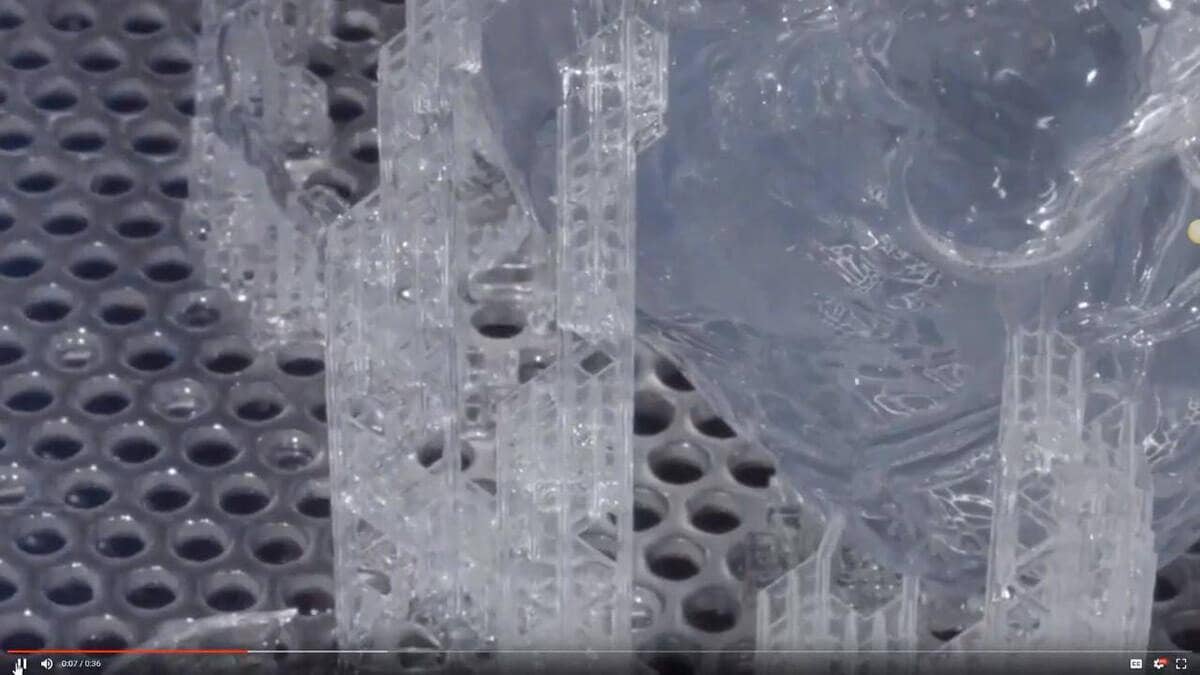Learn all there is to know about 3D printing with Stereolithography (SL) 3D Printers. In this webinar, Hawk Ridge Systems’ Senior Application Engineer, Luke Davis will shed light on 3D printing’s most senior technology. We will provide background on the process and showcase application studies (surface finish, material properties, quick prints, complex designs, cases studies), along with what differentiates it from other 3D Printers. Luke’s vast knowledge of 3D printing provides all attendees the opportunity to learn more about SLA technology and how UnionTech 3D printers allow you to bring this function back in-house. Learn more in our webinar below!
3D Printing’s Most Senior Technology – Stereolithography
Video Transcript
Introduction
To set expectations today, I’m going to be talking about Stereolithography (SL) technology. That’s, really, a type of 3D printing technology. First, I’ll explain what that is. Then, I’ll go over why you should choose or consider SL technology, its applications, some case studies. After that, I’m going to talk about the UnionTech printers themselves, and then, I’m going to demo the software, and I’ll spend about 15 minutes showing you the software.
Definition of Stereolithography (SL)
Lastly, I’ll talk about next steps if you want to bring this technology in-house. What it takes, and how to contact us to move forward. Okay. What is SL technology? Sometimes, it’s called SL, or SLA so, it’s stereolithography. The A at the end is for aperture, and you will see them used interchangeably. If you hear either one, they mean the same thing. What it is, it’s a type of technology that will slowly build your 3D CAD files into a real object. This technology for 3D printing uses a laser to cure at specific locations of that, of resin to build your parts.
Resin
The resin is a photopolymer that’s cured by the laser. If we look over on the right-hand side here, what we can see is this black box here would be the laser itself. The red is just– You don’t actually feel the laser, it’s not a red beam, but the laser will shoot out, and it will hit a scanning system which is just a set of mirrors that move that determine where that laser should hit the vat or resin, and wherever the scanning system moves that laser is where that laser is going to cure and start building your parts. Next, we have a vat. A vat just holds whatever type of resin you put in.
There are about 12 different resins, and you can choose based on what resins is best for you, and then, a vat will hold it. This is a representation of the 3D printed part that’s being printed. Each one of those little lines is called a layer, or a step between building your parts. Here’s a close-up of it. This is a picture of the side of the SLA printer. Here’s another detailed view of it so, we have a laser, the scanning system which acts just as a mirror that moves to adjust where that laser should hit.
We have the solidified resin right here, and then, we have the platform that moves down, and the resin around it. What is really fantastic about this technology is that there are not many moving parts. Everyone wants reliability and if you can imagine, less moving parts means more reliable. What we have that moves is basically the scanner system which moves the mirror, and the platform that goes up and down. That’s about all that moves. Once you get it set up and leveled so, you level the scanning system, or you adjust the scanning system, and you level the platform to the resin, and then, that’s about it.
It’s very reliable, there are not many moving parts. That’s one of the things I really like about it. This technology has been around since the 80’s and so, it’s been really vetted, and they’ve worked out a lot of the kicks. That’s a quick overview of what SLA is. Next, I’m going to talk about why you would choose the SL technology over other ones. The main benefits of SL technology are the versatility. There are 12 different materials of resin, and each one of these resins has different material properties, and therefore, a different end use.
You have things that you could print almost like a rubber, or a sponge type material, flexible, all the way up to a very rigid material. You also have the ability to print a clear material, and some very high-temperature materials, up to 260C. Those are a lot of different options you have. The other thing I like is its isotropic performance. The way the weight the laser– As it’s curing each layer, it actually penetrates a little deeper than just whatever layer thickness it is.
If you’re printing at, let’s say 100 microns, it will penetrate about maybe a 120, and the reason it does that, is so it actually bonds the previous layer. You have very– When we talk about isotropic strength if you’re pulling in X, Y or Z, you want all those to yield or fail at the same amount of pressure or force. Some other technologies do not have at one direction which is usually the Z, is quite a bit weaker.
If you’re interested in learning more about Stereolithography, please CONTACT US or you can GET PRICING TODAY for UnionTech 3D Printers.




